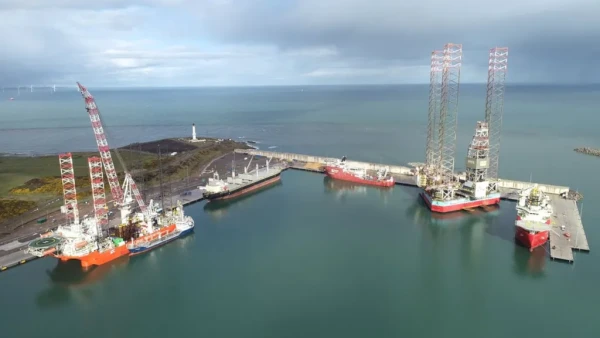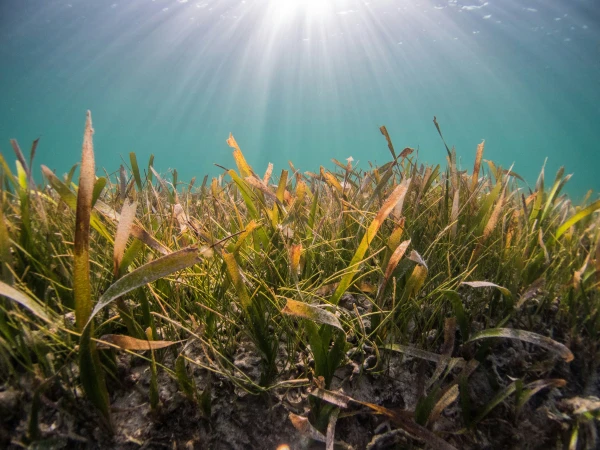Our Views
How to do a demand study of a marina project
Introduction: Why Marina Demand Analysis Matters
Demand analysis is a critical first step for any marina development or expansion project. Marinas are capital-intensive investments, and their success hinges on understanding the market demand for berths and services. A thorough demand analysis helps developers and investors avoid the costly mistake of “flying blind” without clear market insight. In other words, without a clear grasp of demand, one might overestimate a marina’s potential or underestimate challenges, leading to unfilled slips or unprofitable operations. By contrast, a robust demand analysis provides evidence-based confidence that a new marina or an expansion is justified. It informs design decisions, financing plans, and marketing strategies, ensuring the project aligns with real market needs. In this article, we break down the key steps and methodologies to assess marina demand – from market segmentation and competitive analysis to forecasting and avoiding common pitfalls – so that stakeholders can proceed with solid data and insight.
Market Segmentation: Identifying Your Boater Segments
A successful marina demand analysis begins with clearly defining the target market segments. Not all boaters are the same – understanding who will use your marina is essential. Start by segmenting the market by geography and demographics:
- Local vs. Visiting Boaters: Consider the mix of local residents who need year-round or seasonal slip rentals versus regional or international boaters passing through. Local recreational boaters might use the marina as a homeport, while international yachters or cruisers might visit as part of a longer voyage.
- Boat Owner Profiles: Categorize boaters by the type of vessels and ownership. Segments could include small recreational boat owners, luxury yacht owners, sailing enthusiasts, fishing boat owners, and so on. Each group has different needs and spending patterns. For example, a marina catering to megayachts will require different amenities than one serving mainly trailerable fishing boats.
- Purpose of Use: Identify why boaters would use the marina. Some might be tourists or charter operators looking for transient slips, others might be second-home owners keeping a boat nearby for leisure, and some could be liveaboards. At this stage, it’s useful to consider factors like age, income, lifestyle, and boating interests for each segment
Segmentation should also account for vessel size and usage patterns. A thorough market analysis will segment the market by yacht/boat size categories, vessel types (sail vs. power, etc.), and usage (day trips, long-term cruising, regatta participants, etc.). This level of detail is important because it directly influences the facilities and berthing mix your marina must offer. By clearly defining segments – local weekend boaters, traveling superyachts, seasonal snowbird boaters, etc. – you can tailor the marina’s design and services to meet each group’s specific needs.
Competitive Analysis: Understanding the Marina Landscape
No marina exists in isolation. The next key step is to analyze the competitive landscape, which means studying existing marinas and boating facilities in the region. The goal is to determine how much supply is already available and how your project can position itself in the market. Key points to evaluate include:
- Existing Marinas and Capacity: Identify all marinas in the vicinity or within the same boating region. How many slips do they offer, and of what sizes? What is their occupancy rate? High occupancy or waiting lists at nearby marinas can indicate unmet demand that a new or expanded marina could capture. In fact, industry surveys have found that over half of marinas report occupancy rates above 95%, underscoring that many facilities operate near full capacity. Such data signals strong demand and suggests an opportunity for new capacity if the local market is similar.
- Services, Amenities, and Pricing: Assess the strengths and weaknesses of competitor marinas. What services do they provide – fuel docks, boatyards, dry storage, restaurants, yacht club facilities? Are their slips predominantly for small boats or do they accommodate large yachts? Compare their pricing strategies: slip fees (per foot or per season), storage fees, and other charges. Understanding competitor pricing helps in positioning your marina’s rates appropriately – either competitive with the market or justified as a premium offering if providing superior amenities.
- Customer Feedback and Gaps: Look at marina reviews or interview current users if possible. Competitors’ customer satisfaction can reveal gaps in the market. For example, boaters might complain that existing marinas lack adequate maintenance services or that there’s no marina with a travel lift for larger boats. Such gaps present opportunities for your marina to differentiate. Identify any underserved niches – perhaps there’s demand for more transient slips during a local boating festival, or a lack of facilities for superyachts in the area. A diligent competitive analysis will highlight what a new marina can do differently or better to attract customers.
By mapping out the competition, you gain insight into the supply side of the equation. This helps in estimating how much of the market your marina could realistically capture. It also informs your unique selling proposition – whether it’s offering modern facilities where others are dated, more affordable pricing, a better location, or specialized services that no other nearby marina has. Remember that competitive analysis is not a one-time task; markets evolve, so continue monitoring competitors throughout the project’s life cycle.
Berthing Mix and Utilization Trends
Determining the optimal berth mix – the composition of slip sizes and types – is a fundamental part of demand analysis for a marina. Essentially, you want to align what you build with the profile of boats in the market. To do this, analyze the current and projected boat population in your target area:
- Vessel Size Distribution: Use data on registered boats to see common lengths and types of boats locally. If the majority of boats in the area are under 30 feet, a marina filled with 60-foot slips will be mismatched to demand. Conversely, if there’s a rise in larger yachts, failing to include some slips over 80 feet (or appropriate T-head dock space) would be a missed opportunity. A market demand analysis will specifically look at the number and size of vessels in the region and compare that to existing marina slip sizes – this reveals any shortages (for example, not enough slips for boats over 50 feet) that your project can address.
- Wet vs. Dry Storage: Consider the mix of on-water slips versus dry stack or trailer storage. In some markets, many smaller boat owners prefer dry stack storage (for security or cost reasons), which could reduce demand for wet slips of certain sizes. An analysis of demand should cover all storage options in the area (wet slips, dry racks, moorings) to gauge where there’s unmet need For instance, if nearby marinas have long waitlists for dry stack storage, adding that to your project could attract those customers.
- Utilization and Turnover Trends: Examine how existing facilities are utilized over time. Occupancy rates are a primary indicator – if competitors are at ~95% occupancy season after season, that’s a strong sign of demand. Additionally, look at seasonal occupancy swings (e.g., 100% in summer vs. 50% in winter) and how many transient (short-term) boat visits occur. A marina’s turnover rate (how often slips change occupants or how often transient slips are filled in a season) can highlight usage patterns. For example, a high transient turnover might mean the area is popular among traveling boaters even if all permanent slips are full. These trends inform not only how many slips you need, but also what mix (e.g., a portion set aside for transient use versus long-term leases).
In practice, professional marina feasibility studies include a detailed look at berth mix and scale to match market demand. The aim is to design a marina that is neither under-built (too few slips to meet demand) nor overbuilt with the wrong types of berths. By aligning the berth mix with the market segmentation data, you ensure that each slip has the best chance of being occupied and generating revenue. Monitoring utilization trends at existing marinas (such as peak usage times, waitlist lengths, and slip vacancy by size) provides a reality check to forecast how your marina will perform.
Seasonal and Weather-Related Demand Patterns
Marina demand is highly seasonal in many locations, so factoring in seasonal patterns and weather impacts is crucial. Boating activity often follows the calendar and climate:
- Peak and Off-Peak Seasons: Identify the high season for boating in your region. In temperate climates, summer months usually see a surge in demand as recreational boating peaks. In tropical regions or certain tourist destinations, winter might be the peak (for example, when seasonal visitors flee cold weather elsewhere). Demand analysis should quantify these patterns – what occupancy or usage levels can be expected in peak season versus the off-season. It’s common for marinas to have full occupancy and even waiting lists in peak months, then drop to lower utilization during off-peak times. Planning must account for this revenue fluctuation.
- Weather and Climate Factors: Consider how weather events influence demand. In hurricane-prone areas, for instance, there may be a season when boats are hauled out or moved to safer harbors, temporarily reducing demand (or shifting demand to dry storage). In northern climates, winter freeze means many boats are in storage on land, and marinas might even close water access in winter. Conversely, some marinas see spikes in demand during specific events like a calm weather window or a popular fishing season. Seasonal variations in demand should be explicitly studied and included in any forecast, as they affect not only occupancy but also operational planning (staffing, maintenance schedules, etc.).
- Special Events and Anomalies: Weather-related events (like an unusually mild season) or one-time events (like an international regatta or a boat show coming to town) can cause short-term demand spikes. While these are hard to predict, your analysis can review historical occurrences. For example, if a major sailing regatta is hosted locally every April, marinas might fill up with visiting boats during that period – a demand analysis would note this annual bump in transient slip needs. Similarly, regional events such as holiday weekends, fishing tournaments, or festivals can create predictable surges in marina usage.
Incorporating seasonal and weather patterns into your demand analysis helps set realistic expectations. It may inform decisions like building extra transient slips to accommodate summer visitors, or ensuring the marina design includes hurricane-resistant features and a plan for boat storage during storms. For investors, understanding seasonality is also key for financial projections – knowing that winter income might be a fraction of summer’s, for instance, will affect cash flow planning. In short, a marina demand analysis isn’t complete until it addresses when demand occurs, not just how much.
Key Demand Drivers: Tourism, Travel Circuits, and Events
Beyond generic market forces, certain demand drivers can significantly influence marina usage. Identifying these drivers in your demand analysis will highlight why boaters might be drawn to your marina and help you tap into those opportunities:
- Tourism and Location Appeal: Marinas in popular coastal or lakeside tourism destinations often benefit from an influx of transient boaters and charter boats. Tourist boaters – such as those chartering yachts or traveling as part of a vacation – can boost occupancy during vacation seasons. If your project is in a high-traffic tourist area (historic port city, island chain, scenic coastline), tourism statistics like visitor arrivals and hotel occupancy can serve as proxies for potential marina demand. A rise in coastal tourism generally correlates with more boats in local waters, as noted by industry observers. Leveraging this, your demand analysis should consider trends in the tourism sector and how they might drive marina usage (e.g., more tourist boat rentals or visiting yachts during peak holiday months).
- Yachting Circuits and Cruising Routes: Some marinas lie on established yachting circuits – for example, seasonal migration routes like the Mediterranean in summer and Caribbean in winter, or the intra-coastal waterways used by long-distance cruisers. If your marina can serve as a convenient stopover or seasonal base for these itinerant boaters, that’s a demand driver. Look at cruising guides and patterns: are there many international yachts passing through the region? Are there existing “marina hubs” that overflow, indicating excess transient demand? Catering to these boaters might mean ensuring customs/immigration services (for international arrivals) or offering the amenities long-distance cruisers need (fuel, provisioning, repairs). Transient boaters are a critical segment in many marinas, and their movement patterns (often driven by weather seasons and cruising rallies) will affect demand.
- Second-Home Owners and Relocation Trends: Demographic shifts can drive marina demand. A notable example observed in recent years is the increase in people buying second homes or moving to coastal areas, thereby keeping their boats closer and using them more frequently. For instance, during the COVID-19 pandemic, many families relocated from big cities to smaller coastal or lakeside towns, purchasing vacation or retirement homes. The boating industry benefited from this wave of new local residents with boats, as they were now near the water and could go boating more often. In your analysis, consider local population growth, especially of affluent or retired populations, and housing trends: if a region is becoming a popular second-home destination, marina demand might grow in parallel (more boats purchased or moved into the area).
- Regattas, Events, and Boating Culture: Enthusiasm for boating activities – such as sailing regattas, fishing tournaments, or boat shows – can be a strong driver of demand. A marina located in a sailing-centric community or one that regularly hosts competitions will see heightened demand around those events. Even if such events are periodic, they contribute to overall marina visibility and can convert one-time visitors into regular customers. If relevant, incorporate local yacht club activity, annual events, or membership growth in boating clubs into your demand drivers. These are qualitative indicators but can be quantified by things like the number of participants in regattas or spectators arriving by boat.
- Economic Factors and Lifestyle Trends: Broad economic indicators also drive demand. Rising disposable income often correlates with higher boat ownership in a region. Additionally, lifestyle trends – for example, a growing preference for outdoor recreation or the popularity of the boating lifestyle among younger generations – can create tailwinds for marina demand. Tracking boat sales and registrations is one concrete way to gauge this. For example, in 2020 the U.S. saw over 310,000 new powerboats sold (a double-digit increase from the previous year), a level not seen since before 2008, and many of these new owners needed marina space to store their boats. Such data on boat ownership trends, if available for your country or region, are invaluable in projecting future demand.
In summary, demand drivers tell the story of why boaters will come. Whether it’s to explore a beautiful locale, participate in a vibrant boating scene, or simply because more people are boating now than before, each driver adds context to the raw numbers. Your demand analysis should weave these drivers into the narrative – for instance, “Tourist visitation to the area is growing 5% annually, which is boosting transient slip rentals,” or “A new annual sailing race is expected to draw 50 extra boats each spring.” Recognizing and quantifying these drivers helps ensure no important factor is overlooked.
Stakeholder Interviews and User Surveys
While hard data is vital, there’s also no substitute for on-the-ground insights. Engaging with stakeholders through interviews and surveys provides qualitative depth to your marina demand analysis:
- Local Boater and Yacht Club Input: Speaking directly with those who are active in the local boating community can reveal demand that isn’t evident in the statistics. For example, a conversation with a local yacht club might uncover that its members have been seeking more slips or that they would support a new marina because the current facilities are inadequate. These stakeholders can highlight specific needs – perhaps there’s demand for a boat repair yard or a lack of berths for deep-draft sailboats – which helps refine your project’s focus.
- Marina Operators and Industry Experts: If expanding an existing marina, interviews with current marina management and staff can shine light on usage patterns and customer requests. Even if it’s a new development, consulting regional marina operators or brokers can provide expert judgment on demand. They might share insights such as, “We get calls every week from 50ft boat owners looking for slips,” or “Transient boaters always ask about availability in this area during the summer.” This kind of information is qualitative but extremely actionable.
- Potential Customer Surveys: In some cases, conducting a survey of boat owners in the target market can yield quantitative support for your analysis. Surveys might ask boaters if they would consider moving to a new marina, what amenities they value most, and how much they’d pay for a slip. For instance, you could survey registered boat owners within a 50-mile radius to gauge their satisfaction with current options and interest in a new facility. A well-designed survey can segment responses by boat size or usage type, aligning with your earlier market segmentation work.
- Community and Business Stakeholders: Don’t overlook the broader community and related businesses (charter companies, marine supply stores, tourism boards). Interviews with these stakeholders can reveal synergistic demand – e.g., a charter boat operator might be looking for a new base of operations, or the tourism office might indicate a need for transient moorings for visiting tour boats. Additionally, community leaders can provide context on support or concerns, which, while more related to feasibility than demand, still shapes how fully demand can be realized (a community excited about a new marina might lead to more local boat ownership or patronage).
In practice, comprehensive feasibility studies often “involve surveys and interviews with potential users” to enrich the market analysis. These qualitative findings help validate (or challenge) the conclusions drawn from data. For example, if the data shows a certain number of boats in the area, interviews might reveal that many of those boats are actually trailer-launched each weekend because slip fees are too high – indicating a price-sensitive demand. Or surveys might reveal latent demand: people who would buy a boat if a good marina were available. By incorporating stakeholder input, you ensure your demand analysis isn’t just theoretically sound but grounded in the reality of what your future customers want. Moreover, engaging stakeholders early builds relationships that can translate into future customers or supporters of the project.
Historical Trends and Economic Indicators
Analyzing historical and economic trends provides a foundation for understanding how marina demand might grow (or fluctuate) over time. Key indicators and data points to research include:
- Boat Registration and Ownership Trends: Historical data on the number of registered boats in the region is a direct measure of the potential customer base. Is the boating population growing or shrinking? Break it down by boat type if possible (sail vs. power, small vs. large vessels) to see which segments are on the rise. For example, a steady increase in sailboat registrations might signal growing demand for sail-friendly marina facilities. Likewise, if new boat sales spiked in recent years (as happened in 2020–2021 in many places), there could be a surge of new owners now seeking slips. Historical boat ownership data is one of the most telling indicators – it reflects both economic conditions and cultural interest in boating.
- Local Economic and Demographic Indicators: Consider the economic health of the area and its population trends. Rising household incomes and a strong local economy can boost discretionary spending on recreation like boating. Look at population growth rates, especially in demographic segments likely to own boats (for instance, the number of retirees or upper-middle-class families in the region). If a coastal county’s population is booming, it’s reasonable to expect more boats and thus more marina demand. Conversely, if the region has economic challenges or population outflow, demand could stagnate even if there are many boats currently.
- Tourism Arrivals and Coastal Traffic: If the marina will rely on visitors, examine tourism statistics: number of tourists visiting by boat or the increase in waterfront tourism activities. For instance, an increase in cruise ship stopovers might indirectly indicate more yacht tenders or supply boats needing dock space. Or, growth in eco-tourism and water sports could mean more local boats such as dive operators or tour boats requiring berths.
- Historical Occupancy and Utilization: If data can be obtained from existing marinas, historical occupancy rates over several years are extremely useful. They show how demand held up during economic downturns or booms. For example, seeing that marina occupancy only dipped slightly during a recession indicates a resilient demand. Historical waitlist lengths, if available, also show unmet demand over time.
- Comparable Markets: If direct historical data is limited, sometimes one can look at comparable markets or national trends. Industry reports (from boating associations or research firms) might provide macro-level trends: e.g., “Marina industry revenues grew X% annually over the past 5 years” or “Average slip occupancy nationwide is Y%”. While your project will depend on local specifics, these broader trends set context. They might reveal cyclical patterns (maybe boating follows a economic cycle) or emerging changes (like increasing average boat size or shifts toward larger marinas with resort-style amenities).
Gathering these indicators helps build a timeline of demand – past, present, and future. For instance, you might note that boat registrations in the area grew 3% annually for the last decade and even spiked 10% in the most recent year, suggesting strong momentum going forward. Or you might observe that local tourism has doubled in 15 years, pointing to more potential transient boaters. When presenting a marina demand analysis, these trends lend credibility: they show that the projection of demand isn’t arbitrary but grounded in measurable trajectories. Additionally, understanding economic underpinnings (like how interest rates or fuel prices could affect boat usage) can inform scenarios in your forecast.
Demand Forecasting: Tools and Approaches (Quantitative vs. Qualitative)
With a solid base of data and insights, the next step is forecasting future demand for the marina. Demand forecasting combines quantitative techniques with qualitative judgment:
- Quantitative Forecasting: Using the hard data collected, you can project trends into the future. This may involve simple methods like growth-rate extrapolation or more complex modeling. For instance, if the number of boats in the region has been growing at 5% annually, one might project a similar growth rate for the next few years, adjusting for known factors. More sophisticated approaches could include regression analysis (e.g., relating boat registrations to variables like population or income) or time-series models. In marina studies, a common approach is to forecast slip occupancy or rental demand by considering multiple factors – seasonal variations, regional events, and economic trends are often explicitly factored in. For example, an analyst might create a month-by-month occupancy model accounting for seasonal peaks, then layer on expected growth in the boating population and the impact of any upcoming events (like a new ferry service that might either compete or bring more traffic). The forecast should yield an estimate of how many slips will likely be filled over the next 5, 10, or 20 years, and at what rate (utilization percentage).
- Qualitative Forecasting: Numbers alone don’t tell the whole story, so qualitative methods are used to refine the forecast. This includes expert opinions, scenario planning, and Delphi techniques. Engage industry experts or use insights from stakeholder interviews: for example, local marina managers might foresee a plateau in demand if all marinas are full and boating growth could be constrained (a nuance a raw model might miss). Alternatively, an expert might predict a surge in a certain type of boating – say, an America’s Cup event spurring more sailboat activity – which you can incorporate as an adjusted scenario. Qualitative insights ensure the forecast isn’t a straight-line extension of the past when real-world expectations differ. Scenario analysis is particularly useful: you might create a base case (status quo trends continue), a high case (demand grows faster due to a boom in boating or tourism), and a low case (growth slows due to economic or environmental factors). This provides a range of outcomes and helps in planning flexible strategies.
- Demand Forecasting Tools: Many analysts use spreadsheet models as the primary tool, inputting the collected data and assumptions to calculate future demand. There are also specialized marina planning software and templates which can simulate marina occupancy given various inputs. In modern marina management, some are even leveraging data analytics and software to predict demand and optimize pricing (dynamic pricing based on occupancy forecasts). For the purpose of a feasibility study or planning exercise, however, the focus is on clarity and logic of the assumptions. Tools like Excel (for modeling growth curves and seasonality) or GIS mapping (to visualize boat density vs. marina locations) can be quite helpful. The exact tool is less important than ensuring the methodology is sound and transparent.
- Balancing Quantitative and Qualitative: The best forecasts marry the two approaches. Start with the data-driven projection and then use qualitative input to adjust or validate it. For instance, if the quantitative model says “100 new slip renters in five years,” but your interviews with dealers say “boat sales are slowing down lately,” you might temper that forecast slightly. On the other hand, if there’s a buzz in the sailing community about a new marina, the take-up might be faster than pure stats would suggest. Always document the assumptions used – e.g., “Assume 2% annual growth in local boat ownership, based on past trends and expected population growth.” This clarity helps stakeholders understand the forecast and builds trust in the analysis.
Importantly, demand forecasting is not a one-time task. Treat it as an iterative process: as new information comes (e.g., an economic shift or updated boat registration figures), the forecast should be revisited. In fact, ongoing demand monitoring is a best practice even after the marina is operational – it allows management to adjust (such as phasing expansion or changing marketing tactics) in response to real demand versus projected demand. By combining rigorous quantitative analysis with insightful qualitative inputs, you can create a forecast that is both realistic and adaptable.
Common Pitfalls in Marina Demand Analysis (and How to Avoid Them)
Conducting a demand analysis for a marina is a complex task, and there are some common pitfalls that developers and analysts should be wary of. Below are several frequent mistakes along with tips on how to avoid them:
- Overestimating Demand due to Optimism: It’s easy to become overly optimistic about demand, especially if one is passionate about the project. Overestimation can happen by assuming every boat in the area will use your marina or by using overly aggressive growth rates. Avoidance: Stay grounded in evidence – use conservative estimates and cross-verify with multiple data points. Consider performing a sensitivity analysis to see how the project fares under lower-than-hoped demand scenarios. Remember that without a realistic understanding of demand, one is essentially guessing – a mistake that can lead to unfilled slips and financial trouble. Always err on the side of caution in your base-case projections.
- Ignoring or Misinterpreting Market Trends and Competition: A classic pitfall is to focus only on one’s own project and ignore the broader market context. For example, you might assume demand is unlimited without noticing that a new marina is planned nearby, or that boating popularity is flat in the region. Ignoring competition or demographic trends can lead to disastrous outcomes, such as building a facility for which there is actually no unmet demand. Avoidance: Conduct thorough market research – know exactly what competitors offer and how full they are. Keep updated on boating industry trends (are people buying more boats or shifting to RVs? Is there a trend toward larger boats that existing marinas can’t accommodate?). If the analysis finds that the market is saturated, it might be wise to scale down plans or differentiate the project significantly.
- Poor Market Segmentation (One-Size-Fits-All): Treating all boaters as a homogeneous group is a mistake that can skew demand analysis. For instance, combining data for small boat trailer owners with large yacht owners could mislead your slip requirements. Avoidance: As discussed earlier, segment the market precisely. Ensure your analysis recognizes the differing needs and numbers of each segment. This way, you won’t, for example, build too many large berths when the demand is actually for smaller slips (or vice versa). Align your planned berth mix with the specific demand in each segment.
- Forgetting Seasonal Fluctuations: A demand analysis might correctly predict peak-season demand but forget that off-season demand could be much lower. This pitfall can result in financial strain during the quiet months. Avoidance: Incorporate seasonality into all projections. Be conservative about off-season revenue and consider strategies for year-round income (as an example, some marinas offer winter boat maintenance or off-season land storage to keep revenue flowing). Stakeholders should be informed that high summer numbers won’t persist all year, and plans (financial and operational) should accommodate that.
- Not Consulting Stakeholders or Local Experts: Relying only on data and ignoring the insights from people on the ground can lead to blind spots. For example, data may not reveal that local boaters are unhappy with current marina management and eager to move – but an interview would. Avoidance: Engage with the boating community and potential users early. This can prevent misreading the demand. It also avoids the pitfall of “build it and they will come” thinking – just because numbers say so many boats exist doesn’t mean they will automatically flock to a new marina without the features or management style they prefer. Qualitative research ensures you capture the quality of demand, not just the quantity.
- Static Analysis – Failing to Update or Iterate: Markets evolve, and a demand analysis can become outdated quickly if new developments occur (like an economic recession, changes in regulations, or new competitors opening). One pitfall is treating the demand study as a one-and-done document. Avoidance: Revisit and update the demand assumptions periodically. If the project implementation is long, consider an update if conditions change. This agility can save a project from proceeding on outdated information. Additionally, build flexibility into the marina plan (for example, phasing construction) so that if demand grows slower or faster than expected, the project can adapt.
By being mindful of these pitfalls, developers and investors can navigate around them. It’s often helpful to have a third-party or consultant review the demand analysis to catch any biases or errors – a fresh pair of eyes can spot optimistic assumptions or missed factors. Ultimately, avoiding these common mistakes comes down to thorough research, realistic analysis, and humility in the face of what the data (and people) are telling you. As one real estate feasibility expert noted, skipping a solid market analysis or misreading the market “can lead to unsold units and significant financial losses” – in the marina context, that would be empty slips and lost revenue. Diligence at this stage prevents expensive lessons later.
Conclusion: Best Practices and Recommendations for Stakeholders
Conducting a demand analysis for a marina is both an art and a science – it requires data-driven rigor as well as a nuanced understanding of the boating world. For developers, investors, and consultants embarking on such projects, a few best practices emerge from the above discussion:
- Take a Holistic Approach: A marina demand analysis is not just about counting boats. Consider all facets – the people (boaters and their preferences), the place (location and climate), the economics (income levels, tourism, boat sales), and the competition. An integrated approach ensures no single factor is over- or under-weighted. Successful marina projects often hinge on combining technical feasibility with sound market economics; “success hinges on a well-executed feasibility study” that seamlessly integrates these analyses. Don’t silo the demand study – connect it with design, finance, and environmental studies for a full picture.
- Ground Decisions in Data (But Verify on the Ground): Use objective data wherever possible – registrations, surveys, occupancy rates, etc. – to back up your conclusions. This will not only guide design decisions (like how many slips to build) but also strengthen your case to investors or authorities reviewing the project. At the same time, validate data with real-world input. If numbers and local insight diverge, investigate why. Maybe the data is outdated, or maybe perceptions are lagging behind a trend. Bridging quantitative and qualitative findings leads to the most robust conclusions.
- Plan for the Future (Future-Proofing): Demand analysis should be forward-looking. Design your marina for not just the boats of today but the boats of tomorrow. If trends suggest boats are getting larger or electric boating is on the rise, factor that in. Projections of future market growth should inform the design so the marina can satisfy changing demand in years to come. In practice, this could mean reserving space for future expansion, designing docks that can be reconfigured for larger vessels, or installing extra infrastructure (like EV charging for boats or space for more dry storage) ahead of time. Flexibility is a key best practice – it allows the marina to adjust as demand evolves.
- Engage Stakeholders and Build Relationships: In the process of demand analysis, engaging with the community and boating stakeholders isn’t just about data gathering – it also builds goodwill and a network of future customers. Continuing this engagement through development and operation (for example, keeping a dialogue with a local yacht club or fishing association) helps ensure the marina remains attuned to its users’ needs. Satisfied early adopters often become the best ambassadors for a new marina, spreading positive word-of-mouth that fills slips quickly.
- Monitor and Adapt: Treat demand analysis as an ongoing exercise. Once the marina is operational, keep tracking the demand indicators – how quickly are slips filling, who is using the marina, and are there new demand drivers emerging (or any fading)? This will allow marina managers to adapt pricing, marketing, or even physical layout (perhaps converting underused smaller slips into larger ones, for instance) to maximize utilization. Essentially, never stop learning from your market.
In conclusion, performing a comprehensive demand analysis is an indispensable step for any marina project. It provides the confidence that a beautiful new marina will also be a busy and financially viable one. By systematically examining market segments, competition, berth needs, seasonal patterns, and growth drivers, and by heeding the lessons of past successes and failures, stakeholders can make informed decisions. A marina that is right-sized and well-aligned with demand will not only achieve strong occupancy and returns, but also become a valued asset to its boating community. As you plan your marina – whether a modest local harbor or an international yachting destination – invest the time and expertise into demand analysis. It’s the compass that will guide your project toward calm waters and prosperous horizons, setting the stage for a thriving marina that serves boaters and investors alike for decades to come.
Sources:
- Aninver Development Partners – Marina Project Feasibility Study Components
- Marina Projects Ltd – Marina Feasibility Studies & Market Research (Scope of Analysis)
- Marina Dock Age – Planning the Perfect Marina (Market Demand Analysis excerpt)
- Leisure Properties Group – Marinas: Supply & Demand Factors (Industry Trends)
- Dockmaster (Blog) – Investing in Marinas: Market Demand and Trends
- Leisure Properties Group – State of the Marina Market 2022 (Demand Drivers)










